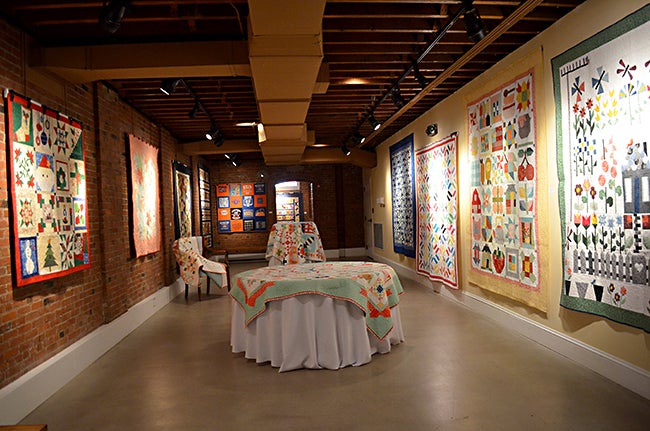Bringing dough to life
Published 11:00 pm Friday, October 19, 2012
Dough art is an ancient craft.
Just how far back in goes, no one can say for sure. But, for sure, as long as the thousands of years that people have been making bread.
There is little doubt that, as bread was being made, it was shaped and formed for amusement rather than nutrition.
For a long time, dough art that is simply made from flour, salt and water was very popular in the South but then came “dough’ that you could buy with “dough” and people starting buying instead of baking, said Susan Berry, a local dough artist.
“Dough art is ancient,” she said. “Those many years ago, during the harvest season, people in the Scandinavian countries made bread ornaments for their walls as an expression of thanks for their daily bread.
“In Mexico, dough figures were made and placed in coffins to ward off evil spirits. And the Native Americans used dough art to make symbols of fertility and they were given as gifts.
“Some cultures didn’t use salt in their dough art either because it was not available or because it was too expensive. Dough art has been around a long time and had many uses.”
Berry has been making dough art for 40 years or more and still has some of the earliest pieces to prove it.
“It seems that, as more people are now wanting to do things the ‘real’ way, there is more interest in dough art, especially when decorating for the holidays,” she said. “It used to be that trees were decorated just for the Christmas season. Now, trees of different kinds are decorated for almost every holiday and dough art is a making a comeback.
“And, what’s so good about dough art is that, first, it’s something that you can do as a family. It’s kid friendly and fun. Those handmade dough ornaments will be treasured memories of times spent together.
“Then, it’s inexpensive and you’ve already got everything that you need to create dough art right there in your kitchen – flour, salt and water. All you need to add is a heaping, helping of creativity.”
To make a “batch” of dough for artistic endeavors, use 2 cups of flour, 1 cup of salt and 1 cup of water.
“That’s one making but you can make a bucket full but just be sure to use the 2-1-1 formula,” Berry said. “You should kneed the dough in a ball until it is smooth and not sticky. If it does get too sticky, add a little more flour before you start to make your ornaments.”
The ornaments should be “created” on a cookie sheet.
“You can’t shape the ornaments on something else and transfer them to the cookie sheet for baking because they will lose their shape,” Berry said.
A variety of kitchen tools can be used to shape and detail the ornaments but Berry recommends the old-fashioned toothpick.
“You can use knives, forks, whatever to detail the ornaments but you’ll always come back to the toothpick,” she said, laughing. “Nothing will detail like a toothpick.”
And, there’s a trick to giving the ornaments character – whether the ornament is a Halloween witch or a Christmas little angel.
When creating your ornaments, work fast,” Berry said. “If you hurry, the ornaments will have character. If you take too long, they will look stale and stagnant and you might was well use a cookie cutter.”
But there’s nothing “cookie cutter” about dough ornaments.
“Each one has a personality,” Berry said. “You can try to make two just alike but you can’t and that’s what so wonderful about dough art. There are no two exactly alike.”
Once the ornaments have been created they are ready for baking.
“The ornaments should be baked on the middle rack of the oven at 240 degrees,” Berry said. “They are ‘ready’ when you can shake them loose from the cookie sheet. It usually takes about two hours. But depending on the thickness of the ornament, it could take 24 hours. Don’t be impatient. This is creation. It takes awhile.”
When the dough art ornaments are fully baked, they are ready for painting.
“Just like the making, the decorating can be done with things that you already have at home,” Berry said. “If you don’t have a small paint brush, you’ll need one. But for painting, you can use watercolor blocks –the kind kindergarteners use. The ones in tin boxes and a paintbrush come with them. You can use acrylic paint or house paint. Or you can use old bottles of fingernails polish or new bottles. You can also use food coloring to color the dough before you shape it.
“But no matter what you use to paint the ornaments, you must seal them with a commercial sealer. I like to spray the ornaments. The sealer goes on smoother. And you don’t want to get too close or it will go on too thick.”
The dough art ornaments came be used to decorate trees, for gifts, as magnets or jewelry.
“You can be as creative with the purpose for the ornaments as you were when you made them,” Berry said. “They need to be kept in an airtight container when not being on display or used for their specific purpose.”
Berry said during the upcoming harvest and Christmas seasons, she highly recommends making ornaments rather than buying them.
“Families and friends can get together and have so much fun making holiday ornaments and, while they are doing so, they capture memories for a lifetime,” Berry said. “These handmade ornaments make cherished gifts. There’s no gift that’s as appreciated as one that is made with love.”






